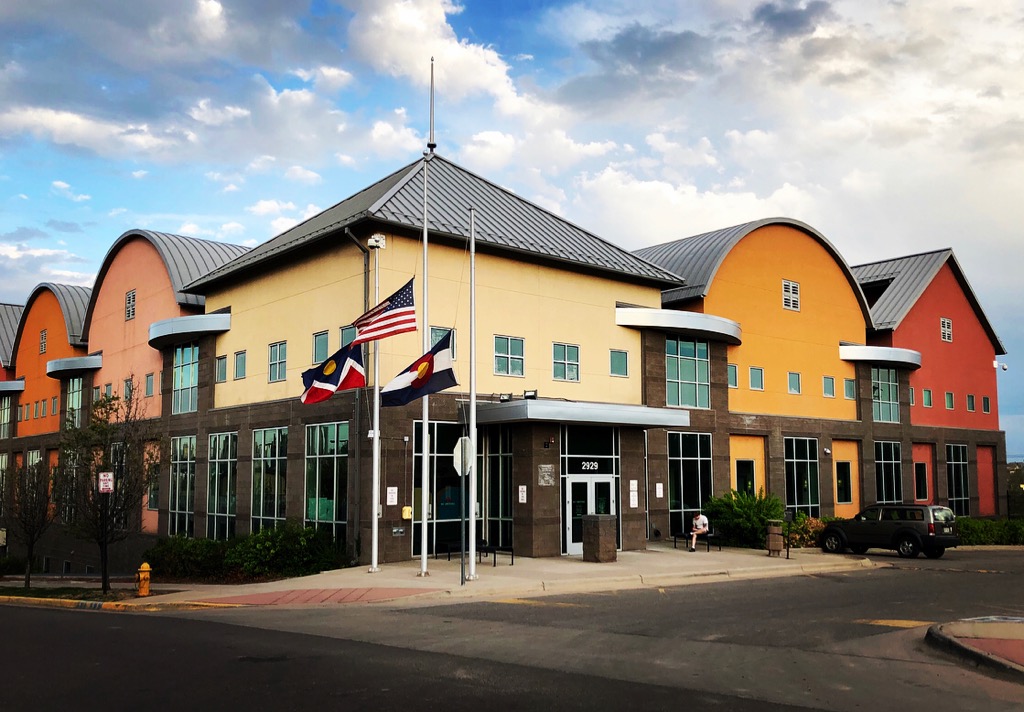In most cities across the nation, jails and ERs routinely serve as de facto mental health providers for people in a behavioral health crisis, particularly those who are unhoused. But for the past two years, a new type of center has operated in Denver’s Sun Valley neighborhood, offering a safe haven and respite for more than 1,500 people who’ve received crisis care.
WellPower’s Behavioral Health Solutions Center opened its doors in May of 2021, becoming among the first centers in the nation developed specifically to offer first responders a safe 24/7 drop-off location for people in a behavioral health crisis, especially those who may also be experiencing homelessness. The “Solutions Center” offers voluntary behavioral health treatment, stabilization, temporary shelter and ongoing assistance for mental health and substance use issues, as well as assistance in transitioning to community living.
“The Solutions Center offers compassion, understanding and a different approach,” said Cassie Williams, associate director of Crisis Services at WellPower. “We serve community members who are sadly accustomed to hearing ‘no’ and encountering a lot of barriers. Instead of being dropped off at crowded jails or busy ERs or returning to life on the streets, they can receive specialized care in a space designed to meet their needs and with more time for respite and recovery.“
The Solutions Center houses a Drop-Off Center, which offers crisis triage and can serve people for up to 24 hours, a Crisis Stabilization Clinic, which can treat people for up to 10 days and a 30-bed Transitional Housing Shelter, which can provide support for up to 30 days.
“The extra time offered at the Solutions Center is one of the most important differences,” noted Williams. “With more time, we can try different treatment options, develop a stronger discharge plan, spend time helping people we serve overcome legal, medical and even administrative barriers that can fuel the cycle of homelessness, addiction and mental illness.”
After two years in operation, the repeat patient rate at the Solution Center is only 12 percent. According to Williams, “This is pretty remarkable considering the very difficult life challenges so many face, including being unhoused, chronic medical conditions, mental health symptoms, food insecurity, lack of jobs and education, previous traumas and more. Something as simple as not having identification can be a major hurdle, but we are here to help them overcome all these challenges, great and small.”
Williams recalls one unhoused young person with a severe traumatic brain injury (TBI) who made several visits to the Solutions Center. Each time, staff gained more trust with him. After several stays, they were able to help him secure physical health care, connect him to a case manager to help meet ongoing needs, clear up out of state legal issues that were a barrier to housing, connect him to Rocky Mountain Human Services and were even able to help secure stable housing in a community for people with TBIs.
“Wins like these are really meaningful for the whole staff,” she said.
Numerous cities have contacted the Solutions Center to learn more about its operations and design. The Solutions Center was profiled in a Wall Street Journal article and has become a model for many communities seeking solutions to help address the strain on community systems, such as jails and emergency rooms .
“It’s really exciting that what’s working here in Denver can benefit people in other states,” said Williams. “I’m proud of the care we offer and Denver’s commitment to new solutions that can really make a difference and help people when they need it the most.”
The Solutions Center is open 24/7, 365 days a year and staffed by more than 45 clinicians, medical staff, nurse practitioners, peer support specialists, residential counselors and support staff. The building includes reception and common areas, laundry rooms, 46 bedrooms, nurse stations, restrooms and showers, private meeting rooms, exam space, kitchen and dining space, work out space and administrative support areas. It is not open for public drop-off; instead, people must be brought by a first responder.


